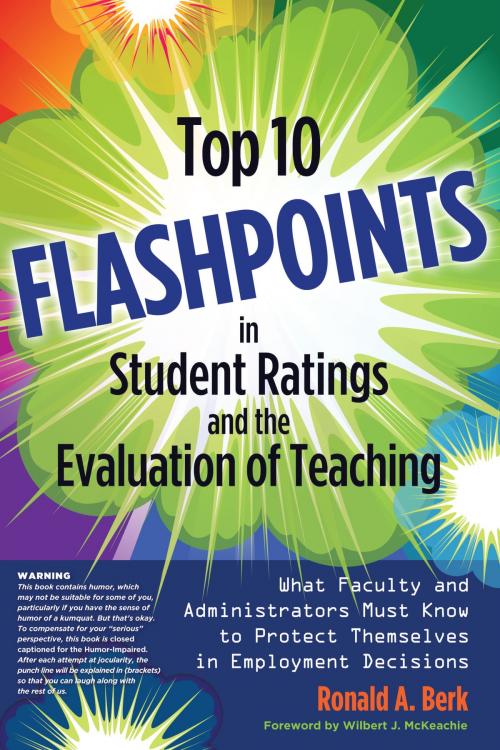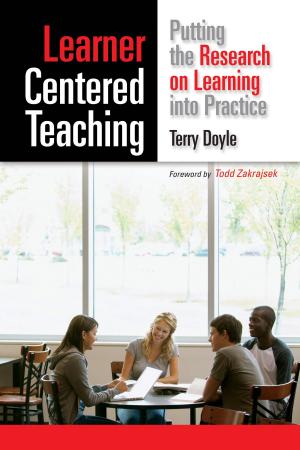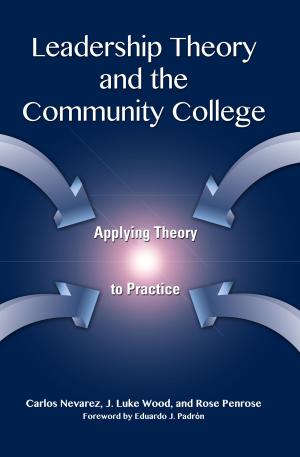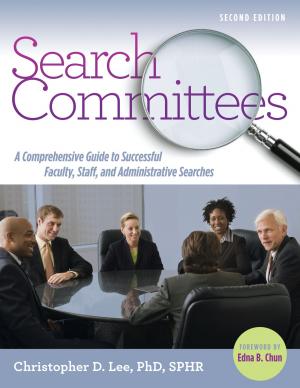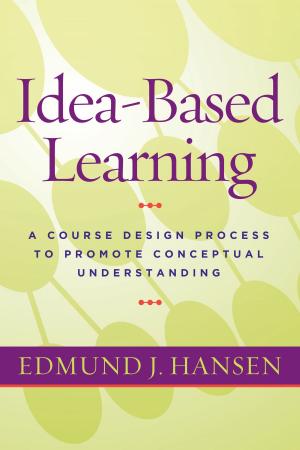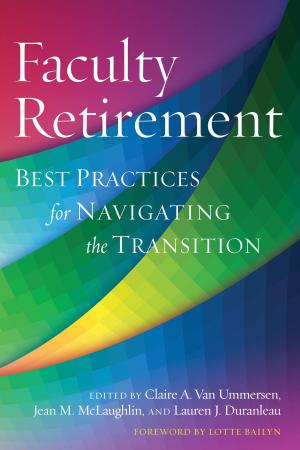Top 10 Flashpoints in Student Ratings and the Evaluation of Teaching
What Faculty and Administrators Must Know to Protect Themselves in Employment Decisions
Nonfiction, Reference & Language, Education & Teaching, Higher Education| Author: | Ronald A. Berk | ISBN: | 9781579229832 |
| Publisher: | Stylus Publishing | Publication: | September 17, 2013 |
| Imprint: | Stylus Publishing | Language: | English |
| Author: | Ronald A. Berk |
| ISBN: | 9781579229832 |
| Publisher: | Stylus Publishing |
| Publication: | September 17, 2013 |
| Imprint: | Stylus Publishing |
| Language: | English |
“Those who read the entire book will end with a much more sophisticated understanding of the problems in evaluating college teaching as well as a helpful guide to possible solutions. I learned a great deal from this book. I recommend it to all faculty, administrators, and scholars in the field.”?Wilbert J. McKeachie, Professor Emeritus, University of Michigan
The “flashpoints” covered are the topics that pop up the most frequently and heatedly on listservs, blogs, and the literature. The recommendations are grounded in psychometric, professional and legal standards. The last-named, in particular, can protect you from costly litigation.
If you hire, promote, demote, and fire full-and part-time faculty based on student ratings and other measures, then you are vulnerable to violations of federal anti-discrimination laws. Several flashpoints address procedures you can take to stay out of court.
If you are a faculty member, you need to know whether your institution’s measures of teaching are appropriate and defensible, and what you should do if they are not.
Three sample “flashpoints” and solutions:
• Use of global items for summative decisions. Solution: “Cease & decist” and use scale and subscale ratings
• Low response rate in online administrations. Solution: 20 strategies to increase rates.
• Use of ratings for contract renewal, pay raise, teaching awards, and promotion and tenure. Solution: Applying 80/20 rule for adverse impact to avoid lawsuits related to unequal pay, gender, race, ethnicity, and age discrimination.
The “flashpoints” covered are the topics that pop up the most frequently and heatedly on listservs, blogs, and the literature. The recommendations are grounded in psychometric, professional and legal standards. The last-named, in particular, can protect you from costly litigation.
If you hire, promote, demote, and fire full-and part-time faculty based on student ratings and other measures, then you are vulnerable to violations of federal anti-discrimination laws. Several flashpoints address procedures you can take to stay out of court.
If you are a faculty member, you need to know whether your institution’s measures of teaching are appropriate and defensible, and what you should do if they are not.
Three sample “flashpoints” and solutions:
• Use of global items for summative decisions. Solution: “Cease & decist” and use scale and subscale ratings
• Low response rate in online administrations. Solution: 20 strategies to increase rates.
• Use of ratings for contract renewal, pay raise, teaching awards, and promotion and tenure. Solution: Applying 80/20 rule for adverse impact to avoid lawsuits related to unequal pay, gender, race, ethnicity, and age discrimination.
“Those who read the entire book will end with a much more sophisticated understanding of the problems in evaluating college teaching as well as a helpful guide to possible solutions. I learned a great deal from this book. I recommend it to all faculty, administrators, and scholars in the field.”?Wilbert J. McKeachie, Professor Emeritus, University of Michigan
The “flashpoints” covered are the topics that pop up the most frequently and heatedly on listservs, blogs, and the literature. The recommendations are grounded in psychometric, professional and legal standards. The last-named, in particular, can protect you from costly litigation.
If you hire, promote, demote, and fire full-and part-time faculty based on student ratings and other measures, then you are vulnerable to violations of federal anti-discrimination laws. Several flashpoints address procedures you can take to stay out of court.
If you are a faculty member, you need to know whether your institution’s measures of teaching are appropriate and defensible, and what you should do if they are not.
Three sample “flashpoints” and solutions:
• Use of global items for summative decisions. Solution: “Cease & decist” and use scale and subscale ratings
• Low response rate in online administrations. Solution: 20 strategies to increase rates.
• Use of ratings for contract renewal, pay raise, teaching awards, and promotion and tenure. Solution: Applying 80/20 rule for adverse impact to avoid lawsuits related to unequal pay, gender, race, ethnicity, and age discrimination.
The “flashpoints” covered are the topics that pop up the most frequently and heatedly on listservs, blogs, and the literature. The recommendations are grounded in psychometric, professional and legal standards. The last-named, in particular, can protect you from costly litigation.
If you hire, promote, demote, and fire full-and part-time faculty based on student ratings and other measures, then you are vulnerable to violations of federal anti-discrimination laws. Several flashpoints address procedures you can take to stay out of court.
If you are a faculty member, you need to know whether your institution’s measures of teaching are appropriate and defensible, and what you should do if they are not.
Three sample “flashpoints” and solutions:
• Use of global items for summative decisions. Solution: “Cease & decist” and use scale and subscale ratings
• Low response rate in online administrations. Solution: 20 strategies to increase rates.
• Use of ratings for contract renewal, pay raise, teaching awards, and promotion and tenure. Solution: Applying 80/20 rule for adverse impact to avoid lawsuits related to unequal pay, gender, race, ethnicity, and age discrimination.
